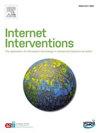使用被动智能手机数据预测身体畸形障碍患者第二天消极情绪状态的强度:一项密集的纵向评估研究
IF 4.1
2区 医学
Q1 HEALTH CARE SCIENCES & SERVICES
Internet Interventions-The Application of Information Technology in Mental and Behavioural Health
Pub Date : 2025-05-15
DOI:10.1016/j.invent.2025.100833
引用次数: 0
摘要
身体畸形障碍(BDD)是一种衰弱和常见的精神疾病,与高自杀率和物质使用障碍有关。负面情绪——尤其是羞耻感和焦虑——在BDD中会升高,并与自杀风险和药物使用有关。拥有可靠和有效的工具来评估BDD中的负面情绪是至关重要的。回顾性自我报告会受到回忆偏差的影响,在较长的时间框架内平均一个人的经历,而且完成起来很麻烦。另外,基于传感器的数字表型有可能在急性时间框架内产生低负担的情绪评估。本研究旨在使用智能手机传感器数据(GPS、加速度计,收集超过3个月)来预测83名BDD成人第二天的羞耻感、焦虑和一般负面情绪状态(通过28天的生态瞬时评估收集)。我们测试了累积链接混合模型(CLMM)和随机森林模型(RF)。RFs在预测性能指标上优于clmm,并且具有42.1 - 50.0%的总体预测准确性(即,预测分数与实际分数完全匹配的比例,在总预测中),而clmm为10.9 - 20.2%。高水平负性情绪的二元预测表现是中等的。开发一种不引人注意的方法,利用智能手机传感器数据在急性时间框架内预测羞耻、焦虑和一般负面情绪状态,可以提供及时干预的机会,作为降低BDD患者自杀和药物使用风险的未来一步。通过更大的样本、更长的时间框架内收集的数据,以及结合基于可穿戴设备的生理数据,模型可能会得到加强。试验注册:ClinicalTrials.gov标识符:NCT04254575。本文章由计算机程序翻译,如有差异,请以英文原文为准。
Predicting the strength of next-day negative emotion states in body dysmorphic disorder using passive smartphone data: An intensive longitudinal assessment study
Body dysmorphic disorder (BDD) is a debilitating and common psychiatric illness associated with high rates of suicide and substance use disorders. Negative emotions – particularly shame and anxiety – are elevated in BDD and correlate with suicide risk and substance use. It is critical to have reliable and valid tools to assess negative emotions in BDD. Retrospective self-reports are subject to recall biases, average one's experiences over broad time frames, and are burdensome to complete. Alternatively, sensor-based digital phenotyping has potential to yield low-burden emotion assessment within acute time frames. This study aimed to use smartphone sensor data (GPS, accelerometer, collected over 3 months) to predict next-day peak shame, anxiety, and general negative emotion states (collected via 28 days of ecological momentary assessment) in 83 adults with BDD. We tested cumulative link mixed models [CLMM]) and random forest [RF] models. RFs outperformed CLMMs across prediction performance metrics and had overall prediction accuracies (i.e., proportion of predicted scores that exactly matched actual scores, out of total predictions) of 42.1–50.0 %, versus 10.9–20.2 % for CLMMs. Binary predictive performance at high levels of negative emotion was moderate. Developing unobtrusive methods for predicting shame, anxiety, and general negative emotion states over acute time frames using smartphone sensor data can enable just-in-time intervention opportunities, as a future step to reduce risk for suicide and substance use in BDD. Models might be strengthened with larger samples, data collected over longer time frames, and incorporation of wearable-based physiological data.
Trial Registration: ClinicalTrials.gov Identifier: NCT04254575.
求助全文
通过发布文献求助,成功后即可免费获取论文全文。
去求助
来源期刊

Internet Interventions-The Application of Information Technology in Mental and Behavioural Health
Medicine-Health Informatics
CiteScore
6.50
自引率
9.30%
发文量
94
审稿时长
6 weeks
期刊介绍:
Official Journal of the European Society for Research on Internet Interventions (ESRII) and the International Society for Research on Internet Interventions (ISRII).
The aim of Internet Interventions is to publish scientific, peer-reviewed, high-impact research on Internet interventions and related areas.
Internet Interventions welcomes papers on the following subjects:
• Intervention studies targeting the promotion of mental health and featuring the Internet and/or technologies using the Internet as an underlying technology, e.g. computers, smartphone devices, tablets, sensors
• Implementation and dissemination of Internet interventions
• Integration of Internet interventions into existing systems of care
• Descriptions of development and deployment infrastructures
• Internet intervention methodology and theory papers
• Internet-based epidemiology
• Descriptions of new Internet-based technologies and experiments with clinical applications
• Economics of internet interventions (cost-effectiveness)
• Health care policy and Internet interventions
• The role of culture in Internet intervention
• Internet psychometrics
• Ethical issues pertaining to Internet interventions and measurements
• Human-computer interaction and usability research with clinical implications
• Systematic reviews and meta-analysis on Internet interventions
 求助内容:
求助内容: 应助结果提醒方式:
应助结果提醒方式:


